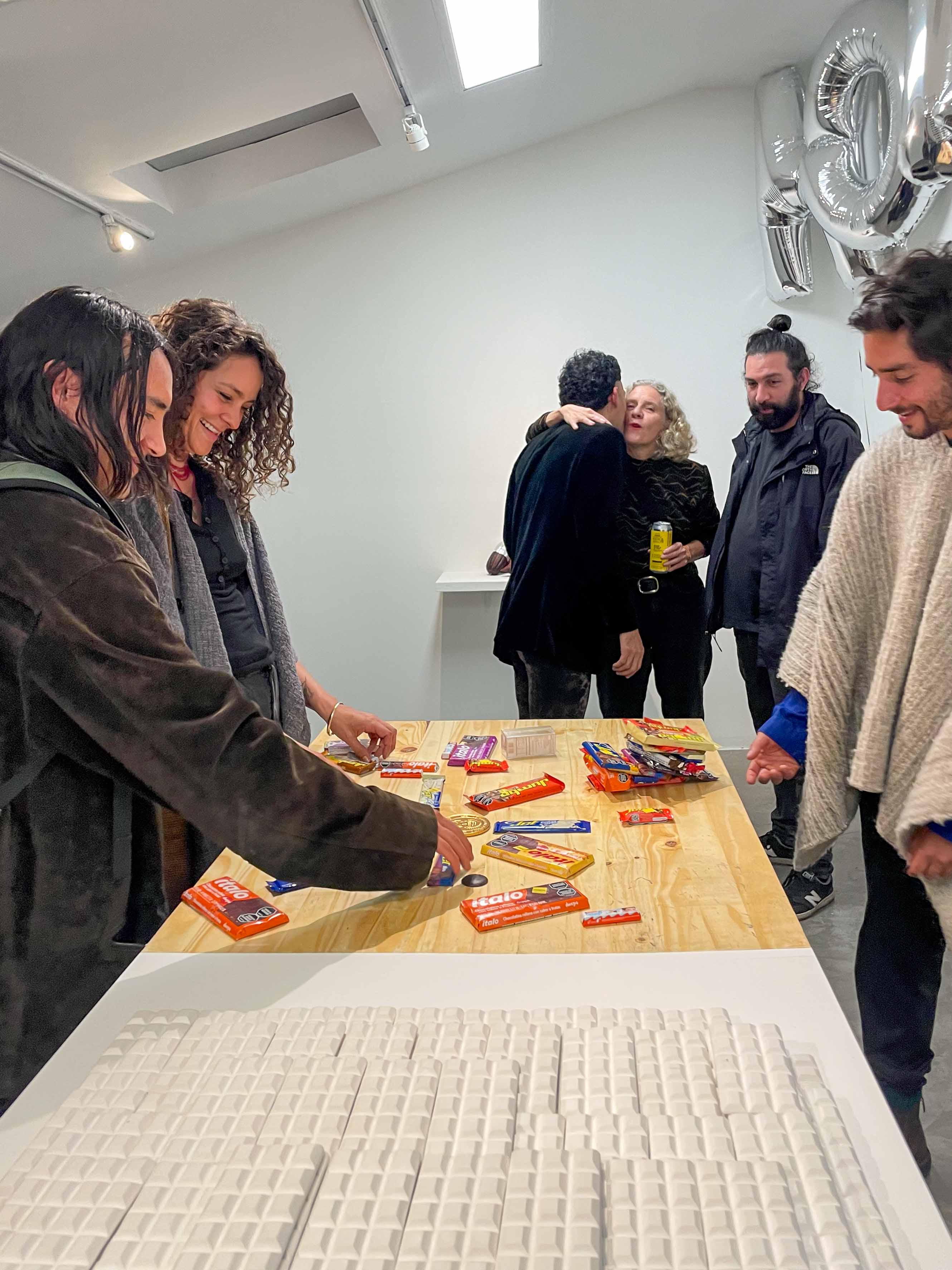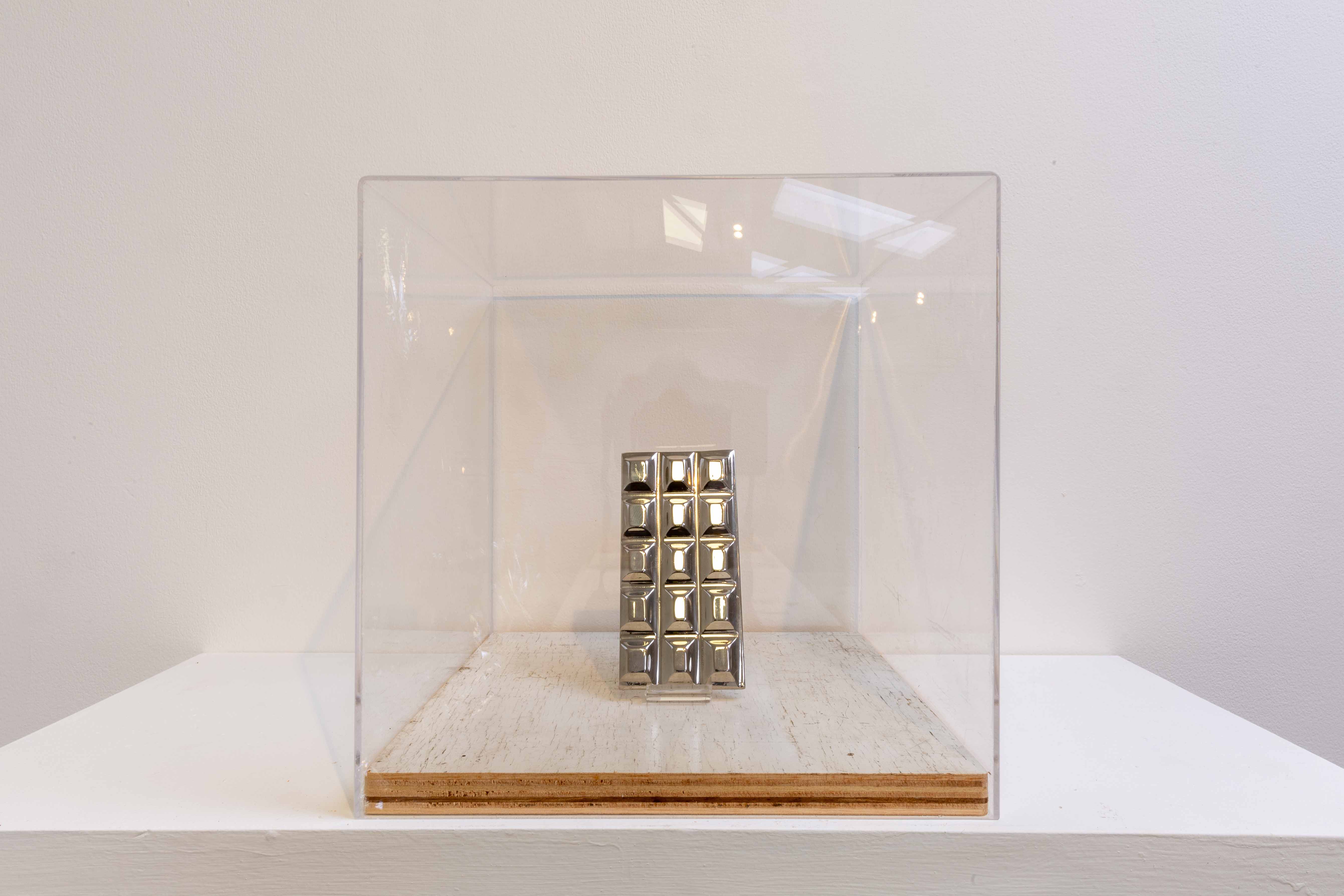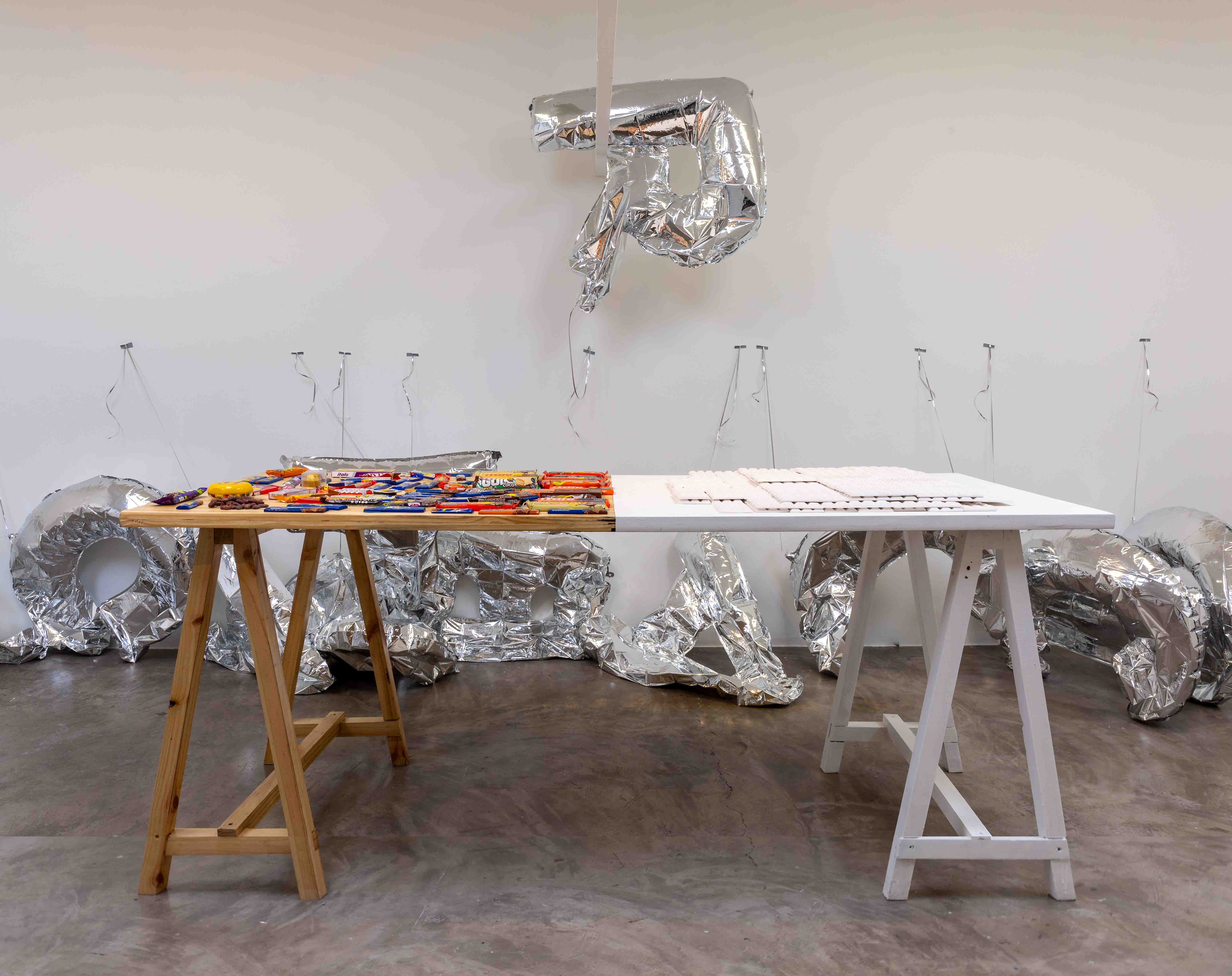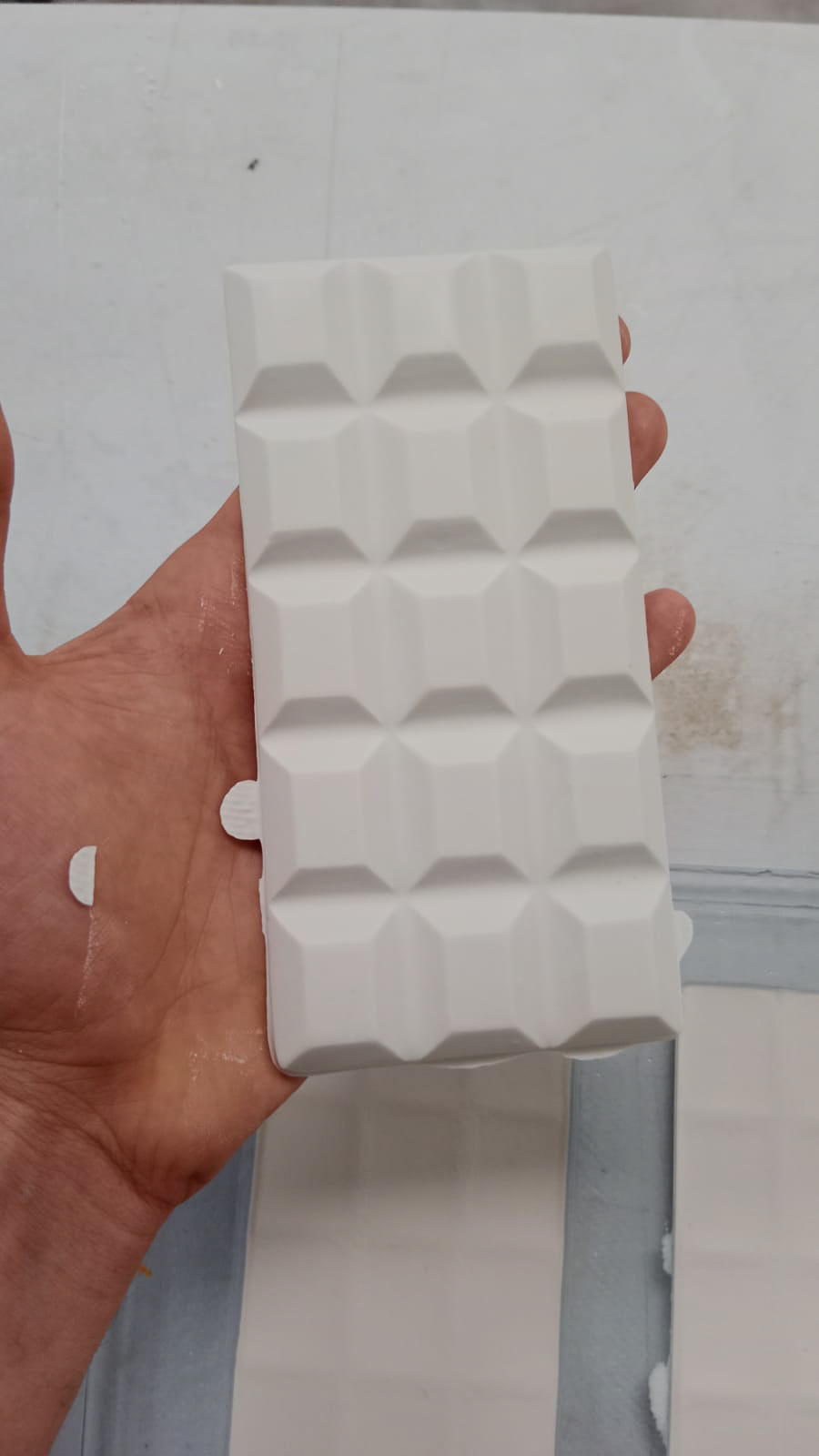the international day of no-abstraction !
the international day of no-abstraction !
SGR Gallery
Bogota 2024
Bogota 2024










The international day of non-abstraction
Imagine a world where a holiday with this name would be possible, where for one day it would not be possible to exchange with money, but only by barter. Where money would be worthless. It would be a holiday to reflect on the value and abstraction of the economy, making evident the fragility of monetary systems and the transactions we take for granted. Even if only for a day.
In this exhibition some “chocolate bars” were not what they seemed: made of plaster, these pieces were an invitation to barter: in exchange for a real chocolate bar, you could take one of these sculptures. With some humor, the exhibition played with the irony of assigned values, reflecting that abstraction is not only a matter of art, but of our economies and historical narratives.
From sphere to bar
Cocoa has been consumed in Abya Yala for at least 5,000 years. The cocoa tree is native to the Amazon, from where it began its journey to other territories, passing through many hands and cultures. For the Mayas and Aztecs, cocoa that was not immediately used to make a beverage was turned into a solid for transportation and storage in spheres. In this form it also served as currency, one that could perish. Circulation on accumulation
Cocoa was introduced in Europe at the beginning of the 16th century, possibly already in its solid form. At first it was consumed mainly by the aristocracy for its aphrodisiac properties. It is not known with certainty when and by whom the first chocolate bar was made, but it was around the 19th century. The manufacturing processes of a modern chocolate bar were developed independently by chocolate manufacturers in different countries.
At that time cocoa goes from liquid to solid, from sip to bite, from sphere to flat, from cocoa to chocolate. A process of abstraction. Likewise, a fundamental part of modern chocolate bars is the aluminum that protects/suggests them. It represents that promise of “something more” that objects hide, of an unfathomable enjoyment whose true location is fantasy.







